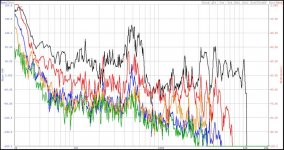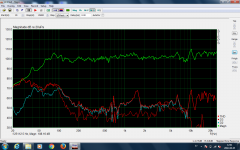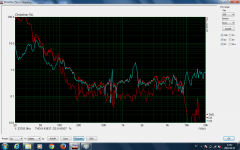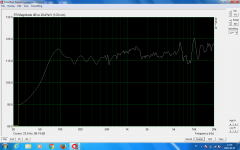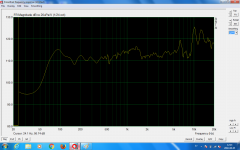Does anyone know the cause of the distortion spike in the 10P and 12P drivers around 500Hz or so? 😕
I've attached an example nicked from Bob Brines spike showing what seems to be 15% distortion at 500Hz with the Alpair 12P drivers.
This seems to be absent in the metal drivers...
I've attached an example nicked from Bob Brines spike showing what seems to be 15% distortion at 500Hz with the Alpair 12P drivers.
This seems to be absent in the metal drivers...
Attachments
maybe there's something in this Beyma paper which would help point out the mechanism (?) http://beyma.com/uploads/descargas/1352741048.pdf
Interesting, I'll sit down and go through it in full tomorrow, but I get the idea 😀 .
I suppose what I'm also asking is; has anyone else observed this in the MA drivers? 15% sounds a little gross to me.
I suppose what I'm also asking is; has anyone else observed this in the MA drivers? 15% sounds a little gross to me.
The 10p is shown here to have similar distortion to what you've shown for the 12p:
Mark Audio Alpair 10P-A Fullrange Loudspeaker Measurements Data and Information Full Range
...there's also a notable bump in impedance at the same frequency.
Mark Audio Alpair 10P-A Fullrange Loudspeaker Measurements Data and Information Full Range
...there's also a notable bump in impedance at the same frequency.
This is precisely why the A12P MLTL's have been sitting in a corner since they were first built and the A10P BR's are being used as shop speakers. On the other hand, the A10M's have been for years and still are my HT mains and the A7M's were my main stereo tops up until my Audax/SS FAST experiments.
Bob
Bob
Yes, I think I dodged the bullet! Just ordered some 10.3s yesterday 🙂 .
I think metal must be the way to go. The new Pluvia Elevens look good 🙄 . Must open up Leonard Audio TL and get cracking!
I think metal must be the way to go. The new Pluvia Elevens look good 🙄 . Must open up Leonard Audio TL and get cracking!
Yes, I think I dodged the bullet! Just ordered some 10.3s yesterday 🙂 .
I think metal must be the way to go. The new Pluvia Elevens look good 🙄 . Must open up Leonard Audio TL and get cracking!
A10p's in FHXL boxes are just a killer speaker, I don't care what anybody says. I'm still running my 12p Super Pensils, and probably will until some sort of fast system replaces them.
jeff
Yeah, the new Pluvia series look interesting indeed - so far a 7 and 11 - can a 5 or 6 metal or even something like a12P be too far behind?
I think this new frame style is the result of work Mark started a couple of years back in attempting to reduce the amount of material used in basket frames, and it coincidentally (or not?) also simplifies installation in that the thinner bezels don't require countersinking
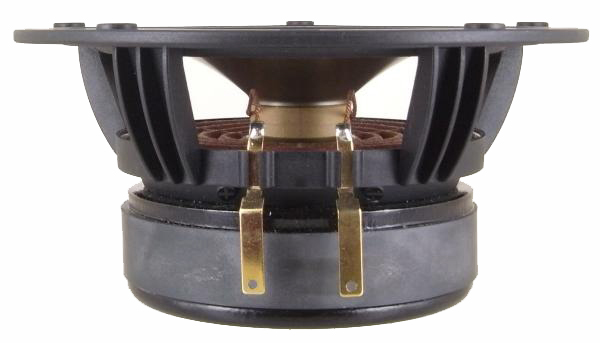
we hope to have some in hand soon, and already have a Q'n'N enclosure design underway
Note in photo above that the terminal tabs are "attached" to the cast resin frame in similar fashion to the A5.2 - if soldering directly, take care to be quick, and be wary of the retaining tabs melting under heat. I'd have done that part differently - more like on the Alpairs, but my name's not Fenlon, or Lo
I think this new frame style is the result of work Mark started a couple of years back in attempting to reduce the amount of material used in basket frames, and it coincidentally (or not?) also simplifies installation in that the thinner bezels don't require countersinking

we hope to have some in hand soon, and already have a Q'n'N enclosure design underway
Note in photo above that the terminal tabs are "attached" to the cast resin frame in similar fashion to the A5.2 - if soldering directly, take care to be quick, and be wary of the retaining tabs melting under heat. I'd have done that part differently - more like on the Alpairs, but my name's not Fenlon, or Lo
Incidentally, on the Alpair series, is the adhesive rubber surround meant to go on the back of the driver, or the cabinet mounting? I know it's probably the former, and a bit of a silly question, but I can't find any info and it doesn't hurt to ask 🙂 .
I might have to finally capitulate to using spade connectors...
Also, does the driver provide it's own baffle step correction characteristic, or will it need to be implemented electronically? It looks like the baffle with have to be about 30cm or so wide for the best effect, looking at the response curve.
I might have to finally capitulate to using spade connectors...
Also, does the driver provide it's own baffle step correction characteristic, or will it need to be implemented electronically? It looks like the baffle with have to be about 30cm or so wide for the best effect, looking at the response curve.
monty - yes the PSA gaskets are to be attached to the rear of frames.
I think production versions will come with MA's standard extra clips (which I might need to start using myself)
I think production versions will come with MA's standard extra clips (which I might need to start using myself)
Yes, the extra terminals on the Alpairs are very handy 🙂 !
Another off topic question, does the directionality of the driver mitigate baffle diffraction effects to any extent 😕 ? I want to put straight chamfers on my next cabinet and veneer over the chamfers with some birds-eye maple to contrast the sapele that will be used for the rest of the speaker. It would be nice to think that this could bring sonic as well as aesthetic benefits. Has anyone ever measured whether curved or straight chamfer provides better results?
But back to mid-band distortion, is this due to some sort of break-up mode as hinted at by the Beyma paper? Presumably metal, being stiffer (and hopefully more so in the Pluvia drivers 😀 ) won't suffer from this. At least it seems that way looking at Bob Brines' THD plots.
Another off topic question, does the directionality of the driver mitigate baffle diffraction effects to any extent 😕 ? I want to put straight chamfers on my next cabinet and veneer over the chamfers with some birds-eye maple to contrast the sapele that will be used for the rest of the speaker. It would be nice to think that this could bring sonic as well as aesthetic benefits. Has anyone ever measured whether curved or straight chamfer provides better results?
But back to mid-band distortion, is this due to some sort of break-up mode as hinted at by the Beyma paper? Presumably metal, being stiffer (and hopefully more so in the Pluvia drivers 😀 ) won't suffer from this. At least it seems that way looking at Bob Brines' THD plots.
That distortion peak is on CHN70 also. It might have something to do with the mechanical handoff from main pistonic mode to drum head membrane distributed complex modes used to get the HF's. There is perhaps some noise from the bending of the paper membrane and it's not really harmonic noise.
Interesting that the same distortions aren't noted in the MA metal cones, which as you may or not know are more "delicate" than paper.
The Beyma paper looks like an interesting read, though I really only glanced through. Like many other distortion factors I suspect it's fair to surmise that these modes are amplitude (force, in this case) sensitive.
The EL70 has the same impedance bump. When asked Mark described it as the transition between purely pistonic behaviour into controlled resonance mode (where ideally the radiating diameter of the cone continually decreases as the frequency goes up).
dave
dave
Hmm... Looking at Brines' THD plots, there does seem to be a little spike of distortion on the metal drivers in the same region, but much lower in amplitude and width, thankfully.
Judging by the tone of the sales pitch for the Pluvia drivers, it seems that the Alpair range are going to be discontinued soon, presumably the smaller paper cones produce less distortion.
I think the 15% distortion on the paper cones is definitely going to be audible 😛 .
Judging by the tone of the sales pitch for the Pluvia drivers, it seems that the Alpair range are going to be discontinued soon, presumably the smaller paper cones produce less distortion.
I think the 15% distortion on the paper cones is definitely going to be audible 😛 .
Hmm... Looking at Brines' THD plots, there does seem to be a little spike of distortion on the metal drivers in the same region, but much lower in amplitude and width, thankfully.
Mine do as well, plus another about an octave higher.
dave
I think the 15% distortion on the paper cones is definitely going to be audible 😛 .
I find it to be noticeable, which is why I prefer the metal coned Alpairs.
I have also measured a peak in distortion in my alpair 7.3 equiped frugelhorns (mk3)
(ECM8000/ focusrite 2i2 / F1J i.e 3rd order bottoming out at 0.1% is the amp, measurement level is 2.82V @ 1kHz, there is allso a notch filter, measurements performed indoor with 20cm mic distance)
(ECM8000/ focusrite 2i2 / F1J i.e 3rd order bottoming out at 0.1% is the amp, measurement level is 2.82V @ 1kHz, there is allso a notch filter, measurements performed indoor with 20cm mic distance)
Attachments
Last edited:
- Status
- Not open for further replies.
- Home
- Loudspeakers
- Full Range
- Mid band distortion mechanism in MarkAudio paper cone drivers
